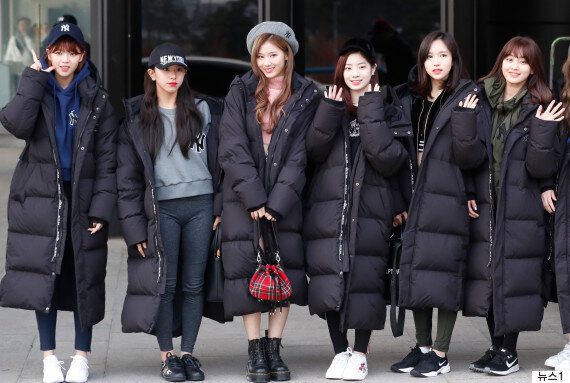If you've ever visited Korea during the winter, you’ve likely noticed a fashion trend that's hard to miss: an overwhelming sea of black, neutral tones, and long padded jackets. This phenomenon raises the question—why do Koreans tend to embrace muted color palettes and uniform styles, especially in colder months? The reasons are rooted in practicality, cultural norms, and even historical influences. Let’s dive into the key factors that make this seasonal trend uniquely Korean.
1. Practicality in Cold Winters

Korea's winters are harsh, especially in the northern regions where temperatures often dip well below freezing. Long black padded jackets, often referred to as "padded coats" (패딩), are ubiquitous for one reason: warmth. These coats are insulated with down feathers or synthetic alternatives, providing maximum comfort against biting winds and freezing temperatures.
Black is the most common color for these jackets because:
- Heat Absorption: Black absorbs more sunlight, which can provide a slight edge in warmth during sunny winter days.
- Durability and Cleanliness: Black is less prone to visible stains from snow, dirt, or city pollution, making it a practical choice for daily wear.
2. Cultural Influence: The Power of Conformity

In Korea, social harmony and fitting in are highly valued. This cultural emphasis on collectivism often extends to fashion choices. Wearing neutral tones like black, gray, and beige creates a sense of unity and prevents standing out unnecessarily.
- Avoiding Unwanted Attention: Flashy or bold colors might draw unnecessary attention, which can be seen as undesirable in a society that values modesty.
- Workplace and Daily Norms: In professional settings, neutral tones are considered appropriate and sophisticated. This mindset has trickled down to casual wear, especially in urban areas like Seoul, where sleek and minimalistic fashion dominates.
3. Historical and Aesthetic Preferences

The preference for muted colors can also be traced back to historical and aesthetic roots:
- Traditional Influence: Korean hanbok (한복), the traditional attire, often featured vibrant colors for special occasions, but daily clothing was historically more subdued. This practicality carried over to modern fashion.
- Modern Minimalism: Korean aesthetics, especially in recent decades, have leaned heavily toward minimalism. Neutral colors are seen as chic, versatile, and timeless, aligning with modern Korean style.
4. Media and Celebrity Impact

K-pop idols, actors, and influencers play a significant role in setting fashion trends in Korea. While stage outfits or photoshoots might showcase bold and experimental looks, most celebrities opt for simple, neutral tones in their day-to-day lives. Fans often emulate these styles, reinforcing the popularity of muted colors.
Additionally, the rise of "street style" in Korea has made monochrome outfits a staple in urban fashion. Influencers and street photographers frequently capture all-black ensembles, further perpetuating the trend.
5. The Ubiquitous Long Black Jacket

Long padded jackets, affectionately nicknamed "bench coats" (벤치코트), have become a winter uniform for Koreans of all ages. Originally popular among athletes to keep warm during breaks, these jackets gained mainstream appeal for their practicality and sleek look.
Here’s why they’re everywhere:
- Uniform Appeal: Many schools and companies provide these jackets as part of their winter gear, making them a standard choice.
- Affordable Accessibility: Long padded jackets are available at various price points, from luxury brands to affordable retailers, ensuring everyone can own one.
- Functional Comfort: The full-length design protects not just the torso but also the legs, which is crucial for staying warm in Korea's unforgiving winters.
- Aesthetic Convenience: Due to the long padded jacket covering a person's body from head to toe, it offers an illusion that can display an individual's body ratio as long and slim, covering up many physical complexes.
6. Seasonal Sadness and Color Psychology
The muted tones in winter fashion may also reflect seasonal mood changes. Winter in Korea can feel long and gloomy, with shorter daylight hours and frequent overcast skies. Bright colors might feel out of place in such a setting, while darker tones mirror the season’s subdued atmosphere.
Breaking the Mold: Is Change Coming?
While black and neutral tones dominate, there are signs of change. Younger generations and fashion-forward individuals are experimenting with pops of color, bold patterns, and unique styles. The rise of social media and global fashion influences are gradually challenging the status quo, encouraging more diverse winter wardrobes.
Conclusion
The Korean winter wardrobe, dominated by black and neutral tones, is a perfect blend of practicality, cultural norms, and aesthetic preference. Long black padded jackets are not just a fashion statement—they’re a survival tool in the freezing cold. However, as global trends influence younger Koreans, we may see more vibrant colors brightening up the winter streets in the future.
Whether you’re a visitor looking to blend in or someone curious about the trend, one thing is certain: Korean winter fashion is as functional as it is iconic.
